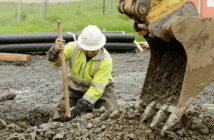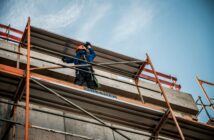Changes to our H&S landscape will see WorkSafe moving more to improving culture and education over prosecution. With the shift in the regulator’s approach, we reached out to industry bodies who are already operating under a similar culture to understand how this new model could work.


Brett Murray is Chief Executive at Site Safe
Site Safe is the industry safety body for construction. Launched in 1999 ‘by industry for industry’, Site Safe has 6200 member businesses in its community, more than 80 percent of which are small- to medium-sized organisations.
With 78,000 learners being educated across a full range of health and safety practices every year through their national training programme, they have followed a knowledge-based approach to safety for some time, motivated by a philosophy of care before compliance.
In the health and safety reforms announced earlier this year, to underpin this shift in focus education and guidance, the Minister for Workplace Relations and Safety, Brooke Van Velden, has confirmed she would like to see greater use of Approved Codes of Practice (ACoPs), much like has been adopted in Australia, to provide better clarity and guidance – led in part by the regulator but also with input from industry.
In principle ACoPs are something Site Safe and its members support – but with caution.
When we spoke to Site Safe chief executive, Brett Murray, he stressed that the challenge is that the process for developing or updating an ACoP is time-consuming, complex, and requires a lot of real consultation with industry to ensure it is reflective of the current state of knowledge.
“We believe Site Safe will play a critical role in connecting the regulator and industry to create these, so they are effective, well consulted and reflective of where the industry’s understanding is at,” says Murray.
While Site Safe and its members, whom the organisation has consulted on these reforms, are optimistic about the changes, it’s critical that WorkSafe stays focused.
“Improved guidance, education and cooperation is a sound approach, but we do also need the regulator to be a strong one, so while we will work with WorkSafe on the former, we think it’s still mission critical that WorkSafe maintain its authority to act when required.”
Murray believes that despite the challenges facing the industry, such as high turnover, economic instability, and the inherent high-risk nature of construction work, progress has been made, especially for managing risk on large, complex sites and ideally the new approach in legislation and regulation sees this continue.
“We’ve seen that if you care for your employees, then you will take the necessary steps to protect their health and wellbeing. But smaller businesses will inevitably find this harder, especially those without the time and resources to manage their risks. As a membership organisation we are laser-focused on ensuring the voices of these businesses get heard as these changes unfold,” he says.
To really improve safety outcomes requires a strong regulator that is fair and consistent, focused on ensuring the sector is stepping up to manage critical risks in a way that is proportionate to the risk posed.
“With the right operating model, WorkSafe can be a balanced and effective regulator, one that holds poor practice to account, while also engaging and supporting those striving to do the right thing,” says Murray.



